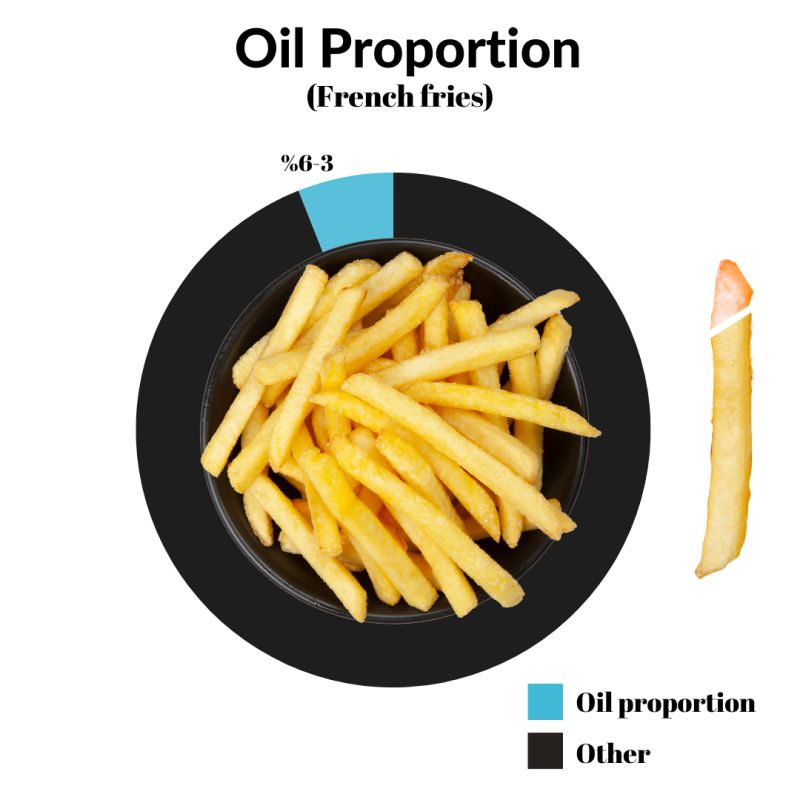According to Berkan İŞERİ, the oil content of a product is an important parameter from the point of view of many aspects. It affects the quality characteristics of the finished product. Many consumers prefer a product with low oil content. High oil content in the finished product affects quality parameters such as crispness, texture and color. During the production process, systems such as frying, cut shape, drying, bleaching, wet cutting, dry matter ratio, raw material variety and PEF, if any, affect the oil content of the product. Oil content also affects the cost of the product.
The optimal oil content of a product can be determined depending on consumer requirements and desired quality characteristics. Manufacturers of potato products must take these factors into account when developing their recipes and processes.
When producing potato products, it is important to achieve a balance between desired quality characteristics and oil content. Too much oil content can result in greasiness and undesirable flavor, while too little oil content can reduce the crispiness and flavor of the product.
Controlling the oil content of a product is an important aspect of production. The use of appropriate technology and processing methods helps to achieve optimal oil content in the product and satisfy consumer needs.
It is important to note that oil content also affects the cost of the product. High oil content can increase production costs, while low oil content can be economical. Therefore, manufacturers carefully analyze the oil content when developing their products and strive to achieve the optimal balance between quality and cost.
In conclusion, the oil content of a potato product plays an important role in determining its quality and cost. Understanding the influence of oil content and taking this parameter into account during production helps manufacturers achieve the desired quality characteristics and satisfy consumer needs.


